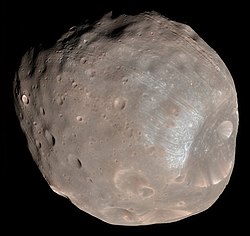 | |
| Mission type | Crewed Mars laboratory orbiter/interplanetary spacecraft |
|---|---|
| Spacecraft properties | |
| Spacecraft type | Interplanetary |

Mars Base Camp (MBC) is a crewed Mars laboratory orbiter concept under study commissioned by NASA from Lockheed Martin in the US. [1] It would use both future and proven concepts as well as the Orion MPCV, also built by Lockheed Martin.
Contents
The Mars Base Camp concept has been proposed to NASA as a possible version of the Deep Space Transport, a crewed interplanetary spacecraft to support science exploration missions to Mars of up to 1,000 days. [2] [3] It would be part of a larger architecture that includes the Lunar Gateway space station. [3] As of April 2018, the Mars transit vehicle is still a concept to be studied, and NASA has not officially proposed the mission in an annual U.S. federal government budget cycle. [4] [5]
The purpose of MBC would be to conduct real-time communication science, both in Mars orbit and on the surface of its moons (Deimos and Phobos), and serve as a proving ground in preparing humans for future missions to Mars’s surface.

